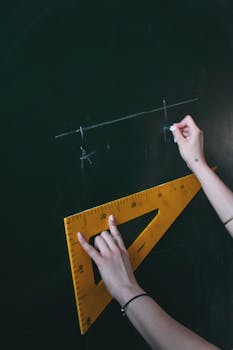What is learning outcomes measurement?

What is Learning Outcomes Measurement?
Learning outcomes measurement is a crucial aspect of the educational process. It involves evaluating the effectiveness of educational programs by assessing what students have learned during a course or program. This practice not only helps educators understand the impact of their teaching methods but also enables students to gauge their own progress. In a world where education is increasingly viewed through the lens of accountability, understanding learning outcomes measurement is essential for both educators and learners alike.
Understanding Learning Outcomes Measurement
Learning outcomes measurement is a systematic approach to evaluating the knowledge, skills, attitudes, and values that students acquire through their educational experiences. By pinpointing specific outcomes, educators can gather valuable data that informs curriculum design, teaching strategies, and student support services.
Definition of Learning Outcomes Measurement
At its core, learning outcomes measurement refers to the process of assessing whether students have achieved designated learning goals. This measurement can encompass various assessment methods, ranging from tests and essays to practical demonstrations and peer evaluations. The main purpose is to determine how effectively an educational program meets its objectives.
Importance in Education
Why is measuring learning outcomes so critical in educational institutions? For starters, it provides a framework for assessing the effectiveness of teaching methods. When educators understand which strategies lead to better learning outcomes, they can refine their approaches for greater effectiveness. Additionally, this measurement fosters transparency and accountability, enabling institutions to report on their performance to stakeholders, including students, parents, and regulatory bodies.
For more insights on the significance of measuring learning outcomes, you can explore this informative article on Measuring Learning Outcomes: Benefits and Challenges.
Methods of Measuring Learning Outcomes
There are multiple approaches to measuring learning outcomes, each with its strengths and weaknesses. Understanding these methods is vital for educators aiming to improve their assessment strategies.
Formative Assessment
Formative assessments are ongoing evaluations that occur during the learning process. They help educators monitor student progress and adjust teaching methods accordingly. Techniques such as quizzes, classroom discussions, and observational assessments are common in formative evaluation. These assessments provide immediate feedback, allowing both students and educators to identify areas for improvement.
Summative Assessment
In contrast to formative assessments, summative assessments evaluate student learning at the end of an instructional unit. Examples include final exams, projects, and standardized tests. These assessments are used to measure how well students have grasped the material and whether they have met the predetermined learning outcomes.
Use of Rubrics and Standards
Rubrics are valuable tools that provide clear criteria for evaluating student performance. By outlining specific expectations, rubrics help reduce subjectivity in grading. Educators can use rubrics to assess everything from essays to presentations, ensuring a consistent and fair evaluation process. For more information on methods of measuring learning outcomes, check out this resource on Methods of Measuring Learning Outcomes and Value Added.
Challenges in Learning Outcomes Measurement
While measuring learning outcomes is vital, it comes with its own set of challenges. Recognizing these challenges is the first step toward addressing them.
Subjectivity in Assessment
One of the primary challenges in measuring learning outcomes is the inherent subjectivity in assessments. Personal bias can influence grading, leading to discrepancies in how students are evaluated. To mitigate this issue, educators should employ multiple assessment methods and involve peers in the evaluation process.
Alignment with Learning Objectives
It’s crucial that assessments align with intended learning objectives. Misalignment can result in misleading data about student learning. Educators should regularly review and update their assessment strategies to ensure they accurately reflect the desired learning outcomes.
Best Practices for Effective Learning Outcomes Measurement
To maximize the effectiveness of learning outcomes measurement, educators can implement several best practices.
Setting Clear Learning Goals
Establishing clear, measurable learning goals is fundamental. Goals should be specific, attainable, and relevant to the educational program. By articulating these objectives clearly, educators can design assessments that effectively measure student progress.
Engaging Stakeholders
Involving stakeholders—such as students, faculty, and administrators—in the measurement process can enhance its effectiveness. Collecting feedback from these groups provides valuable insights into how well learning outcomes are being met.
Continuous Improvement and Feedback
Finally, using feedback to inform continuous improvement is essential. Regularly analyzing assessment data allows educators to identify trends and make data-driven decisions for enhancing their teaching practices. This cycle of feedback and adjustment can lead to better learning outcomes over time.
To explore more about effective practices, consider reading this guide on How to Measure Learning Outcomes and Impact.
Conclusion
Learning outcomes measurement is a vital component of the educational landscape. By accurately assessing what students learn, educators can refine their teaching methods, enhance student engagement, and ultimately improve educational outcomes. Implementing best practices in learning outcomes measurement not only fosters a culture of accountability but also empowers students to take charge of their learning journey. As education continues to evolve, prioritizing effective measurement strategies will remain essential in shaping future generations.